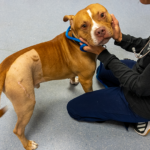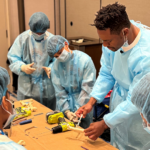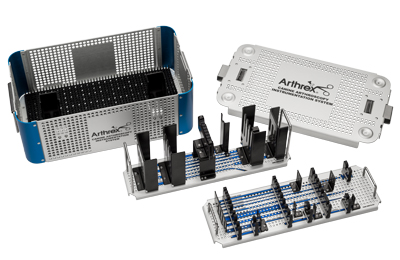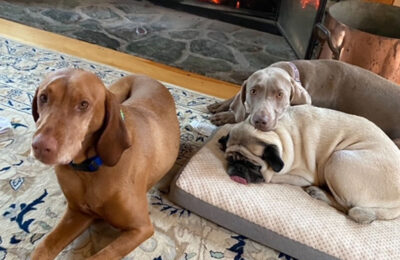When Senior Director of Sales Operations MC Schmieding‘s beloved dog Lily Rose started falling down for no apparent reason last year, at first it felt a little comical.

“We started calling her ‘Stumbles,’ she’s so little and she would just topple over at times,” MC said.
But as the 7-year-old Morkie’s (Maltese-Yorkshire Terrier mix) condition got progressively worse, the worry set in.
“My dogs are family and when Lily Rose started having trouble even standing up to eat, much less going for a walk or playing, it got scary,” she said.
After seeing her local vet and having X-rays taken, MC immediately reached out to the Arthrex Vet Systems team for advice on what to do next.
“My first call was to [Vet Sales Representative] Doug Tollett,” MC said.
Doug jumped into action, sending Lily Rose’s radiographs to veterinary surgeons all over the state of Florida.
 “Almost every surgeon I consulted with recommended referring her to The University of Florida,” Doug said. “They have all the tools and personnel available to care for a small dog like Lily Rose and they were the best veterinary hospital in the state to treat a unique case like hers.”
“Almost every surgeon I consulted with recommended referring her to The University of Florida,” Doug said. “They have all the tools and personnel available to care for a small dog like Lily Rose and they were the best veterinary hospital in the state to treat a unique case like hers.”
Stanley Kim, BVSc, MS, DACVS (SA), Professor of Small Animal Orthopedic Surgery at The University of Florida, diagnosed Lily Rose with a severely luxating patella on the left side. The condition is part of an anatomic abnormality that is common in little dogs.
“It’s an alignment problem that usually doesn’t cause serious issues,” Dr. Kim said. “But in Lily Rose, it was very pronounced. In addition to her falling down, we were concerned the luxating patella may cause her cranial cruciate ligament (CCL) to degenerate, which would then also require treatment.”

The fix for Lily Rose involved surgery to deepen the groove for her patella to ride in and using implants to stabilize her knee. Dr. Kim first performed a Tibial Tuberosity Transposition (TTT) using the Drillsaw Mini 300™ system. He then used a 2.5 mm Mini PushLock® anchor loaded with 1.3 mm SutureTape, securing it with a 2.6 mm button to provide rotational stability.
“The surgical procedure is pretty common, but the challenge we faced with Lily Rose was her size,” Dr. Kim said. “She weighs less than five pounds and the luxation was severe, so the margin for error is much smaller.”
Because Lily Rose is so petite, Dr. Kim first printed 3D models of her hind leg bones from a CT scan to double check the implant size and to make sure there were no deformities that he couldn’t see in her scan.
“It was crucial that we had careful pre-surgical planning in this case,” said Dr. Kim. “It’s advantageous to have products that come in different sizes ranging from tiny dogs all the way up to giant breeds. That is a game-changer for this type of surgery.”

Lily Rose recovered quickly, but then a year later, she developed the same issue on her other leg, requiring surgery again with Dr. Kim.
This time, she didn’t need the TTT surgery, but they did deepen the groove for her patella and used the same anti-rotational SutureTape and button to stabilize the knee.
Today, Lily Rose is back on her feet and Dr. Kim expects her to live a normal life.
“The vet team was spectacular, they took such good care of Lily Rose,” said MC. “Today she is running around like crazy. She has the quality of her life back and we are so grateful.”







